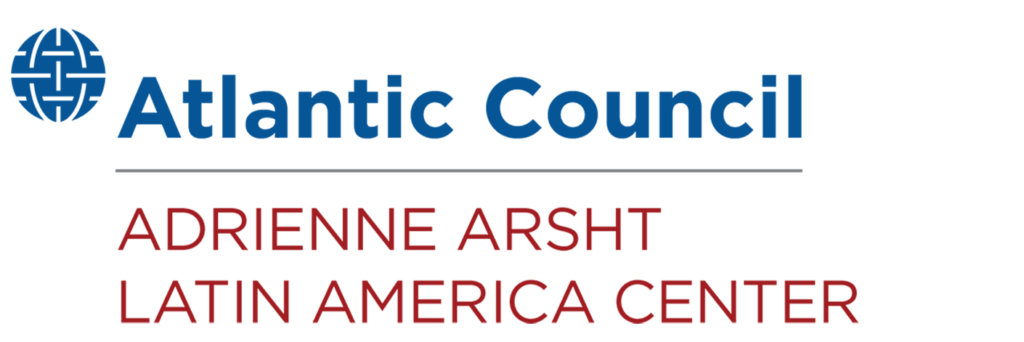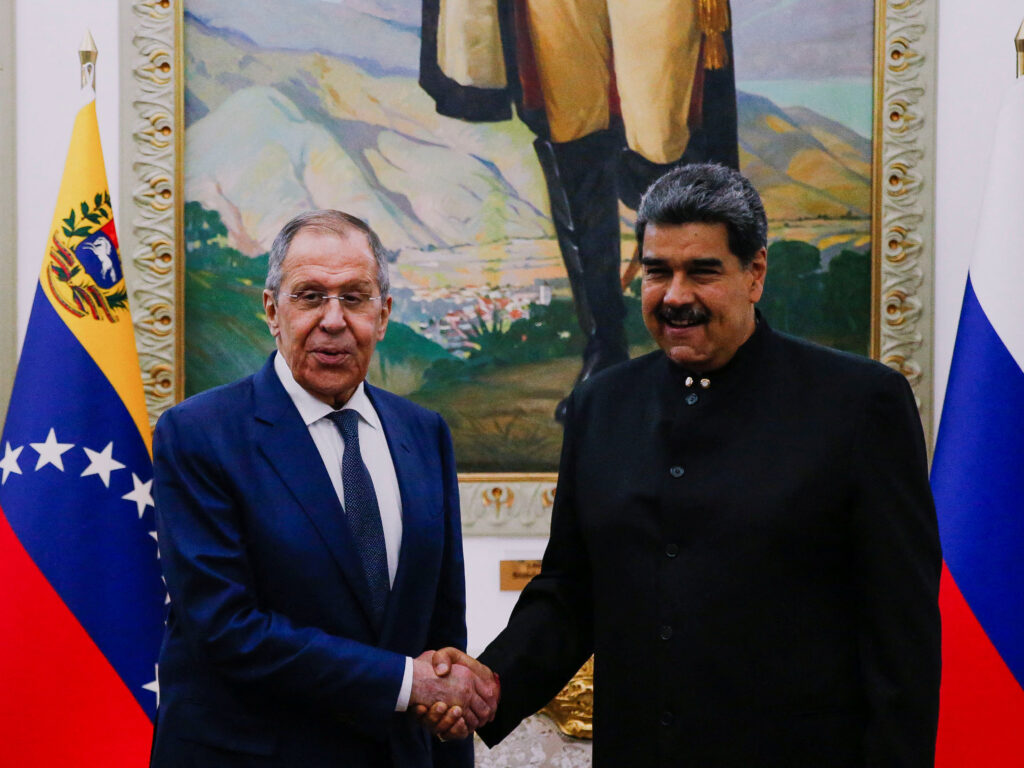Influence, relating to foreign powers, comes in many forms and is accrued in many ways. It can encompass premeditated operations directed at a nation or region to spread disinformation, undermine democratic practices, and instigate dissension and strife. It can also mean the ability to constrain, channel, or divert what would otherwise be domestic-level decisions into a more favorable direction for foreign powers such as China and Russia.
China and Russia operate and influence in a myriad of ways, but the core of their influence is through covert and overt strategies to undermine the US position in the region and to shape the foreign policy preferences in Latin America and the Caribbean (LAC). For both China and Russia, this includes increasing support for what they call a “multipolar world,” with the United States cast as a declining power, China an increasingly ascendant power, and Russia a great power seeking to assert that status on the global stage. In China’s case, influence in LAC is channeled to reduce regional support for democratic Taiwan, in a region where eight of Taipei’s fourteen global allies are situated. For Russia, influence is channeled to lock in a preference for Russian arms and either outright support for its war in Ukraine or silence in multilateral bodies, and a reluctance to join the Western sanctions campaign.
While their interests may often converge in LAC, China and Russia have distinct ways of engaging and operating in the region. In short, Chinese engagement is more thorough and multifaceted than Russian engagement. It encompasses regional organizations and institutions, international financial institutions, and deep economic ties on the bilateral level. By contrast, Russia’s engagement is more circumscribed. Russia has been unable to connect itself economically to LAC in the same way that China has, limiting its engagement to the bilateral sphere as well as to security cooperation and military-to-military relations. Russia’s limited “value add” to LAC means that its deepest relations are often with the region’s most autocratic and isolated governments.
Varying aims
China relies on investment through its state-owned enterprises capable of swaying decision-making and expanding its economic footprint through the Belt and Road Initiative (BRI). The leading edge of China’s engagement in the region is economic in nature. The power of China’s market, which acts as a large magnet for many countries in the region, allows it to alter the incentives and considerations for domestic political and economic decision-making—sometimes down to the very local level.1Michael J. Mazarr et al., Understanding Influence in the Strategic Competition with China (Santa Monica, CA: RAND Corporation, 2021), 54, https://www.rand.org/pubs/research_reports/RRA290-1.html. China’s control of important supply chains and dominance over certain markets also allows it to weaponize economic interdependence with regions such as LAC.
As a major component of its economic engagement, China also strives to isolate and reduce regional diplomatic recognition of Taiwan, as well as grow support for its rhetoric of an emerging multipolar global order, with China as a major player within that system, and the United States reduced to a miniscule interest even in its own hemisphere.2Thomas Lum and Mark P. Sullivan, “China’s Engagement with Latin America and the Caribbean,” In Focus series, IF10982, Congressional Research Service, updated November 12, 2022, 1. China has been a forceful advocate of organizations that explicitly exclude the United States (and Canada) from regional discussions, such as the Community of Latin American and Caribbean States (CELAC). Further, twenty-one countries have now joined the BRI, with Argentina joining most recently, in February 2022. More countries are expected to join the BRI in the future, with large countries such as Brazil remaining as major prizes.
China also seeks to protect its own model of autocratic governance from criticism, though not necessarily by actively seeking more autocratic governments in the western hemisphere. Of course, those that do exist will receive China’s assistance: China has collaborated extensively with Venezuela, and has supported autocratic governments in Ecuador (2007-2017) and Bolivia (from 2006-2019 and again from 2021 to the present). Yet, China is content if it also manages to keep the region’s democracies relatively quiet and restrained. Its main concerns are criticisms of its internal security and human rights practices, especially in multilateral fora like the United Nations Human Rights Council, the Organization of American States (OAS), and the Inter-American Human Rights System. Thus, one of the ways China no doubt measures its influence is by the amount of support it receives, especially from nominal US partners and allies, for its rhetoric on an emerging multipolar world, as well as the extent to which it is able to ward off criticism of its most concerning domestic and international practices.
To this end, China understands that LAC is still a region of sizeable US influence. The country’s leadership understands that it is unlikely to fully cleave US partners from the United States. To this end, the extent to which Beijing can grow support for the idea of “active nonalignment”—that is, the foreign policy vision that holds that Latin America and the Caribbean should not choose a side in a geopolitical competition between the United States and China, and that the region should be highly skeptical of geopolitical fault lines or blocs surrounding the idea of “democracy” vs. “autocracy”—it can decrease the frequency of the region’s alignment with Washington, thus suiting its long-term geopolitical aims. If China cannot overcome decades of US influence and convert LAC into a strategic asset for itself, leaders in Beijing are content to at least take LAC off the geopolitical chessboard, effectively neutralizing it as a potential strategic asset for the United States in long-term competition.
By contrast, Russia influence is more circumscribed and visible in two major developments and realities. The first is the entrenched nature of the region’s existing autocratic regimes, which have interests that dovetail with Moscow and maintain strong security and ideological relationships with Russia. Russia seeks to sustain state-to-state security relationships with Cuba, Nicaragua, and Venezuela, and to a lesser extent with Bolivia and Peru—all leading purchasers of Russian military equipment. (In the case of Bolivia and Peru, this is largely because the Russians service legacy military equipment.) Supporting Russia’s military-industrial complex is a top domestic concern for President Vladimir Putin, especially as US and European Union sanctions threaten to devastate the future of Russia’s defense industrial base. In Nicaragua, for instance, Russia has supplied ninety percent of the country’s arms imports. Venezuela has purchased nearly $10 billion in Russian weapons, including sophisticated S-300 anti-aircraft missiles.
Second, Russia aims to leverage the region to push back against US action in Europe, where it considers itself entitled to a privileged “sphere of influence.”3Ryan C. Berg, “What Does Russia’s War in Ukraine Mean for Latin America and the Caribbean,” Commentary, Center for Strategic & International Studies, March 1, 2022, https://www.csis.org/analysis/what-does-russias-war-ukraine-mean-latin-america-and-caribbean. Indeed, not only is Russian strategic thinking steeped in the concept of privileged “spheres of influence,” but it tends to link LAC and Europe, seeing LAC as a traditional region of US influence where it can meddle and push back, much as it believes the United States does in Europe. Moscow’s view of LAC as a counterpoint to US policy in the European theater has only deepened as the United States intensifies its support for Ukraine. Through a combination of selective threats and incentives, Russia strives to increase its military and commercial activities, enhance its information warfare operations, and generate an anti-US coalition, destabilizing regimes in the LAC region, mostly to buy itself strategic space in Europe (but also as affirmation of its role as a global power).4Evan Ellis, “Russia’s Latest Return to Latin America,” Global Americans (website), January 19, 2022, https://theglobalamericans.org/2022/01/russia-return-latin-america/. Moscow appears to believe that the United States will either agree to some kind of understanding on its spheres of influence, or be forced to expend more diplomatic bandwidth on regions such as LAC, thus buying itself space in Europe.
Forms of engagement
China’s engagement in LAC takes several forms. It utilizes its role as an observer nation at the OAS and as a member of the Inter-American Development Bank (IDB). These institutions allow Beijing new means of asserting itself and strengthening its influence in the region. China also leverages its own state actors, such as state institutions and state-owned enterprises and cyber actors: These stakeholders participate in dialogues and exchanges with LAC. High-level officials, including Xi Jinping himself, engage with a variety of these dialogues. In 2021, the Chinese leader led the opening ceremony of the China-CELAC forum. Meanwhile, senior Chinese Communist Party (CCP) members regularly make state visits and receive LAC leaders in Beijing.
China collaborates with nonstate actors in the private sector, civil society, and through its various cultural centers. Through these relationships and collaborations, China strives to perpetuate its soft power. China also leverages the CCP’s institutions, such as the International Liaison Department (ILD), to guide its relationships in the region. The CCP meets with regional parties of all stripes—left and right. For instance, between 2002 and 2017, the ILD held nearly 300 meetings with seventy-four different political parties in twenty-six countries in LAC.5Linda Zhang and Ryan C. Berg, “An Overlooked Source of Chinese Influence in Latin America,” The Jamestown Foundation’s China Brief 21, no. 3 (2021), https://jamestown.org/program/an-overlooked-source-of-chinese-influence-in-latin-america/. The ILD has been holding meetings with regional political parties for years—sometimes well before countries recognized the PRC diplomatically. Although we lack detailed understandings of these meetings beyond vague CCP readouts, nontransparent political party meetings conducted through the ILD can be incredibly problematic. LAC’s institutions are not always stable or robust enough to absorb the level of Chinese engagement they sometimes receive, leaving countries vulnerable to CCP influence.
Although China’s main source of influence does not derive principally from defense cooperation or arms deals, the People’s Liberation Army’s role in LAC is growing. Beijing has expanded its realm of military-to-military collaboration.6Lum and Sullivan, “China’s Engagement,” 1. High-level officials from the PLA have sought to strengthen their relationship with the region through military education and joint training, immersive jungle training for PLA members at various regional academies, joint maritime operations, and several port calls by the PLA Navy. In its engagement with CELAC, China has laid out an ambitious set of initiatives for strategic cooperation, as embodied through a joint plan of action for 2022 to 2024.7Leland Lazarus and Ryan C. Berg, “Washington Must Respond to China’s Growing Military Presence in Latin America,” Foreign Policy, March 14, 2022, https://foreignpolicy.com/2022/03/14/china-latin-america-military-pla-infrastructure-ports-colombia/. Such efforts increase the likelihood that China gleans knowledge of the region’s military doctrines, wartime strategies, capabilities, and preparedness, and even achieves a slight increase in the interoperability of LAC’s armed forces with the PLA.
China understands that the best way to accrue soft power is through educational and cultural exchanges, and technological cooperation and expansion. Tech giants Huawei and ZTE have grown in the region’s telecommunications markets at remarkable rates.8Jorge Malena, “The Extension of the Digital Silk Road to Latin America: Advantages and Potential Risks,” Council on Foreign Relations and Brazilian Center for International Relations, January 19, 2021, https://cdn.cfr.org/sites/default/files/pdf/jorgemalenadsr.pdf. While the rapid digitization of the region supports the closing of the digital divide and potentially increases transparency, LAC risks long-term commercial dependencies on China’s 5G technology.9Malena, “The Extension of the Digital Silk Road to Latin America.” As Latin America becomes increasingly digitally connected, the risks of Chinese influence grow with seemingly benign sounding programs, such as “smart city initiatives,” which marry traditional surveillance techniques with artificial intelligence. Overall, they are part of Beijing’s effort to rewire much of the region in its favor. Countries such as Ecuador, under former President Rafael Correa, leveraged “smart city” technology to spy on opposition parties, demonstrating how China can help LAC countries to consolidate autocratic control.10Paul Mozur, Jonah M. Kessel, and Melissa Chan, “Made in China, Exported to the World: The Surveillance State,” New York Times, April 24, 2019, https://www.nytimes.com/2019/04/24/technology/ecuador-surveillance-cameras-police-government.html.
Like China, Russian government officials have been adamant supporters of autocratic regimes in the region, possibly seeking to spread autocratic values by engaging more deeply with backsliding democracies (e.g., with Bolivia and El Salvador). Similarly, Russia engages through its well-known state-owned companies and other entities, including Rosoboronexport, Rostec, Rosatom, GLONASS, Rosneft, and Rusal. Rosoboronexport is a state-owned intermediary agency for defense imports and exports of military technologies and services. Rostec is a state-owned corporation assisting the development, production, and export of advanced industrial products. These two state-owned companies provide the backbone for Russia’s military-to-military collaboration in LAC.
Joint military operations are a favored form of engagement for the Kremlin. Moscow is a critical backstop for authoritarian regimes like Nicaragua, Cuba, and Venezuela and is now searching for stronger connections throughout LAC. In terms of weaponry, a myriad of arms sales has taken place to promote Russian defense systems and the country’s erstwhile robust military-industrial complex. In this respect, countries of note include Argentina, Bolivia, and Peru. Equipment sold and loaned by Russia ranges from fighter bombers and aircrafts to warships and tanks.11Ellis, “Russia’s Latest Return.”
Rosatom, Russia’s nuclear energy corporation, is currently active in Bolivia and Argentina through research reactors and nuclear reactors.12Ellis, “Russia’s Latest Return.” GLONASS is the Russian space-based satellite navigation system with active ground stations in Brazil and Nicaragua.13Ellis, “Russia’s Latest Return.” Russia’s powerful state-owned oil company Rosneft is active in many countries, including in Venezuela, but also in Bolivia, Ecuador, and Colombia. Rusal is the second largest aluminum company in the world, with a burgeoning presence in the Caribbean region.
Overall, Russia’s influence in LAC is far less thorough and multifaceted than China’s. For instance, it does not count robust diplomatic engagement with regional institutions, such as the OAS or IDB, in the same way that China does. In fact, one of Russia’s few regular institutional engagements is attending BRICS Summits (involving Brazil, Russia, India, China, and South Africa), where China overshadows its presence (and India casts a shadow as well). It engages mostly bilaterally with like-minded autocratic governments and engages commercially mostly through its state-owned giants. Thus, the areas of potential concern with respect to Russian engagement in LAC are fewer than in the case of China. The Kremlin’s engagement has been made more difficult by its prosecution of an illegal war in Ukraine.
Lastly, a note about opportunities for China and Russia to gain greater influence in the LAC region. Recent elections have seen the region’s political pendulum swing to the left. Since 2021, there have been around fifteen national elections, and the incumbent has lost in all of them. Further, the pendulum swing to the left has been accompanied by the election of anti-establishment candidates once considered to be on the “fringe” of political discourse. This dynamic, which has some analysts speaking of a “new pink tide,” heralds fertile potential soil for China and Russia to accrete influence in LAC. In general, these governments have hastened to declare an era of “multipolarity,” insist on “multilateralism” as a matter of resolving all regional and global challenges, prefer CELAC and other regional organizations that explicitly exclude the United States, and resist the language of the “free world,” “democracy vs. autocracy,” or any frameworks that would seek to divide the Global South into potential blocs in a long-term strategic rivalry with China and Russia.
A path forward
The following ideas represent the start of a more robust US strategy against China and Russia in LAC.
- Engage on both economic and security issues of greatest concern to LAC. Throughout LAC, a perception of the United States as disengaged and uninterested pervades. Further, the United States must engage on the issues of greatest interest to LAC to counter the narrative that it is only interested in pushing an agenda in LAC, rather than working with LAC.
- Security engagement is insufficient to counter China and Russia in LAC. Without genuine economic engagement, the United States stands little chance of pushing back. The US Southern Command is the preferred partner for many countries in LAC. This should remain the case; however, the United States should cease chimerical thoughts that this is sufficient to curtail Chinese and Russian influence in the region. Washington has not signed a new trade deal in the region in over a decade (The United States-Mexico-Canada Agreement was simply a renewal and update to existing architecture), and the region has noticed. Both Ecuador and Uruguay have negotiated free trade agreements with China and Russia, as the United States has proven itself unable to answer the call. Both countries sought US deals first.
- Work to insulate LAC’s democracies from the corrosive impact of Chinese and Russian influence. Achieving this ambitious goal entails helping LAC’s institutions reduce the power asymmetries that exist in its relationships with China and Russia and ensuring that it maintains a realm of policy autonomy in important areas such as technology, media, dual-use infrastructure, and security. Much of LAC’s vulnerabilities and China’s and Russia’s greatest influence could be mitigated with a greater push for transparency and anti-corruption efforts. In some cases, this may involve assisting LAC in standing up more mechanisms for investment scrutiny.
About the author
Ryan C. Berg is director of the Americas Program and head of the Future of Venezuela Initiative at the Center for Strategic and International Studies.

The Scowcroft Center for Strategy and Security works to develop sustainable, nonpartisan strategies to address the most important security challenges facing the United States and the world.

The Adrienne Arsht Latin America Center broadens understanding of regional transformations and delivers constructive, results-oriented solutions to inform how the public and private sectors can advance hemispheric prosperity.
Image: Venezuela's President Nicolas Maduro meets with Russia's Foreign Minister Sergei Lavrov at Miraflores Palace, in Caracas, Venezuela April 18, 2023. REUTERS/Leonardo Fernandez Viloria
